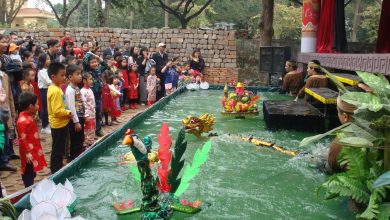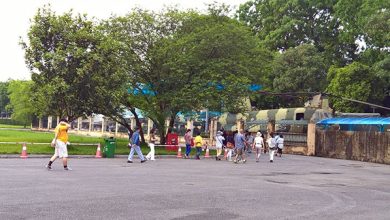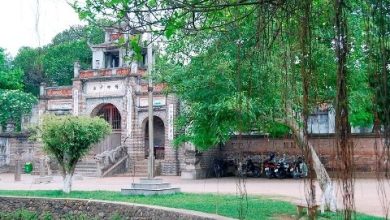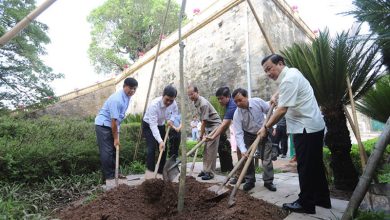Exhibition “Eternal Capital City” kicks off on the occasion of the 1010th Anniversary of Thăng Long – Hà Nội
To commemorate the 1010th Anniversary of Thăng Long – Hà Nội, on 9 October 2020, the Thăng Long-Hà Nội Heritage Conservation Center opened an exhibition titled “The Eternal Capital City” at Thăng Long Imperial Citadel. The event attracted scientists and researchers from the National Council of Cultural Heritage, the Vietnam Association of Historical Science, the Scientific Advisory Council for Research and Conservation of the Cổ Loa Citadel, and many other representatives of local departments as well as a large number of visitors. The exhibition highlights the role and millennial vision of King Lý Thái Tổ when he made the historic decision of resettling the capital in Thăng Long in 1010. Thăng Long under the Lý, Trần, Lê, Mạc, Lê Trung Hưng dynasties and over to this day has always been is the capital of remarkable landscape and location, the sustainable and thriving capital of the whole country.
The exhibition introduces about 100 documents and images, covering three main contents: 1- King Lý Công Uẩn and the decision to move the capital, 2- Thăng Long as capital city, 3- Hà Nội as capital city.
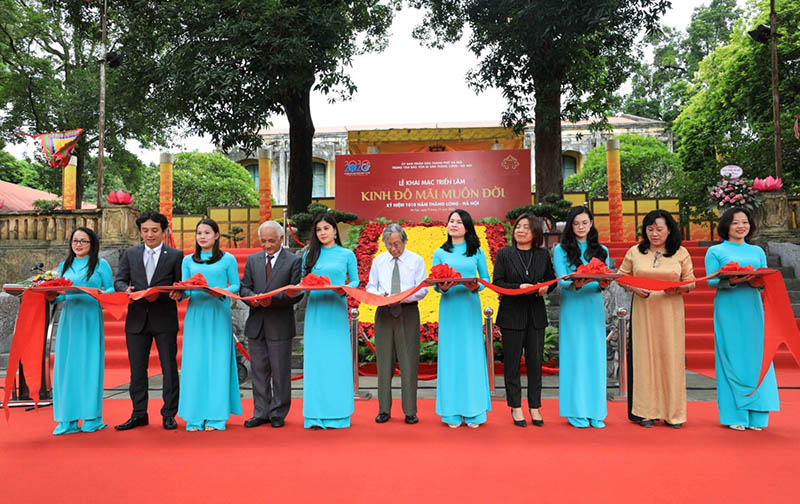
Ribbon-cutting ceremony (photo courtesy of Thanh Tùng)
In the autumn of 1010, King Lý Thái Tổ moved the capital from Hoa Lư to Đại La and renamed Đại La as Thăng Long, opening a new page in the history of the land of Mount Nùng mountain and River Nhị. In the Edict of Capital Transfer, the king called Thăng Long (literally Ascending Dragon) the capital of sacred land and talented people. It “…is in the very heart of the universe. The position evoketh that of soaring dragon and stalking tiger, in the centre of the four directions, convenient for the development of the nation. This area is large and flat, high and bright, the population are not suffering from floods and darkness, everything is in full prosperity. After investigating all lands of Việt, this place is actually the gathering venue of people from across the nation, the most appropriate place for eternal capital positioning.”
During those 1010 years of history, Thăng Long – Hà Nội has always been the venue where major events took place, witnessing the many local and national vicissitudes. From the date of settlement until the end of the 18th century, Thăng Long was the capital of Great Việt, the center of a civilization of the same name. During the Tây Sơn and Nguyễn Dynasties, the capital moved to Phú Xuân in the central province of Huế, but Hà Nội remained a major cultural and economic center of the country. Under the French colonial period, Hà Nội was the capital of the Indochina Federation. After the victorious August Revolution in 1945, Hà Nội was again chosen by President Ho Chi Minh and the first National Assembly of the Democratic Republic of Vietnam as the capital of an independent Vietnam. Since 1976, Hà Nội has been the capital of the independent and unified Socialist Republic of Vietnam.
Today, Hà Nội – the land of national spirit convergence – continues to develop robustly in both size and layout with great and comprehensive achievements, making an important contribution to the common achievements of the whole country. Hà Nội is worthy of its designation as the heart of the country, the national political and administrative nerve centre, and a major center of culture, science, education, economy and international transactions.
Speaking at the opening ceremony of the exhibition, Assoc. Dr. Trần Đức Cường, President of the Vietnam Association of Historical Sciences also stressed that the exhibition “The Eternal Capital City” highlights the vitality of our nation, the vitality of Thăng Long – Hà Nội, the heroic capital. It fosters great pride in every citizen of the capital, who are lucky to be able to live and work in this historic land.
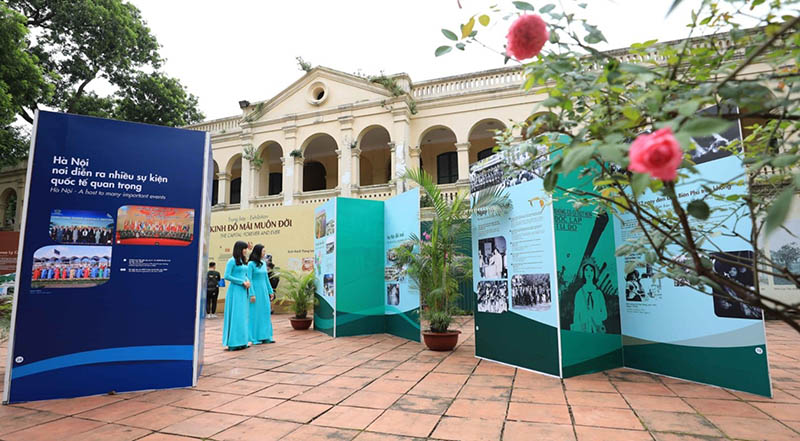
The exhibition space (photo: Thanh Tùng)
After more than a millennium, Thăng Long – Hà Nội is still asserting its unique position as the the capital of the country. It speaks volumes about King Lý Thái Tổ’s time-tested vision about the land of eternal imperial capital. And as historian Ngo Thi Si (18th century) commented, “Long Đỗ (i.e. Thăng Long) land has ” Mount Tản Viên that stands firmly in one realm, River Phú Lương (Red River) that functions like a moat made by heaven. With a land that stretches thousands of miles dwelled by hundreds of rich families, it is the center of the country, in all four directions. The mountain is the cloak, the river is the belt. As the city is backed by rivers and fronted by the sea, the terrain is propitious, wide and long. It is the place where the kings can reside majestically with a stable throne, matched and excelled by no other places in our country”.
The exhibition opens from 9 October 2020 at the Imperial Citadel of Thăng Long, 19c Hoàng Diệu, Ba Đình, Hanoi.
Thăng Long – Hà Nội Heritage Conservation Centre

